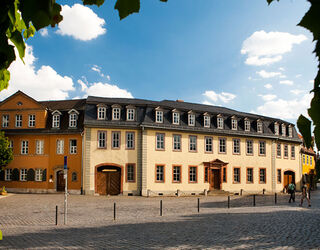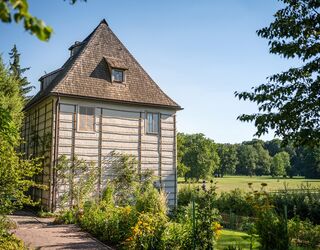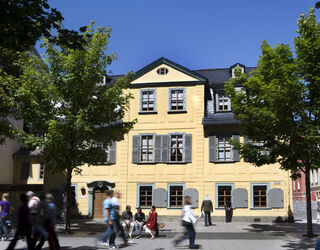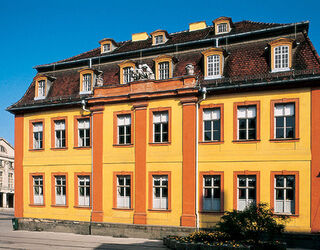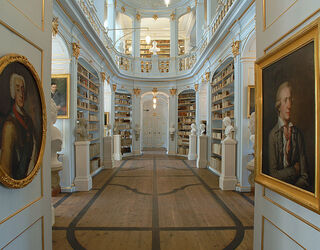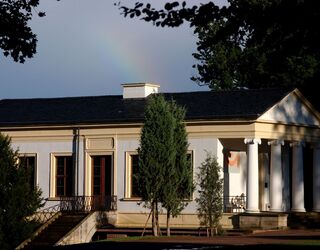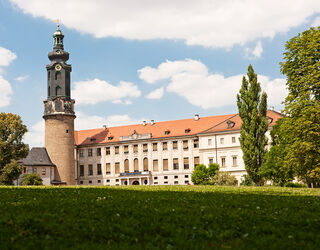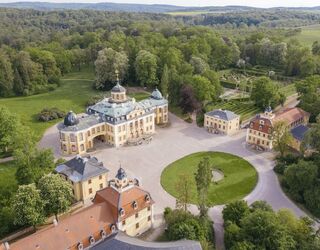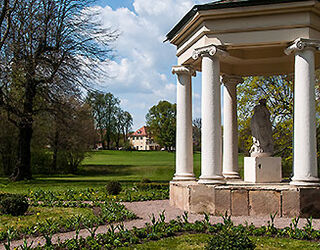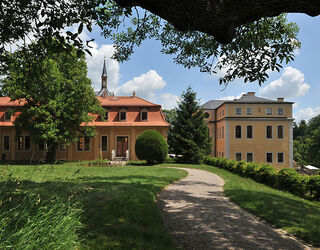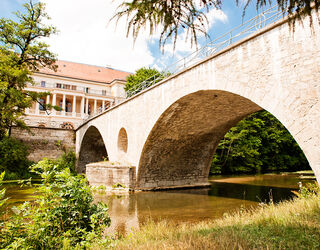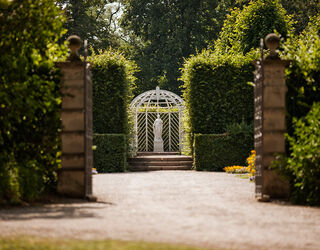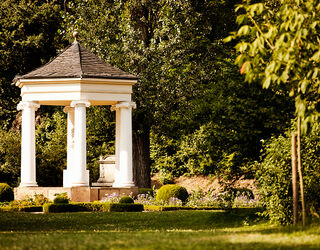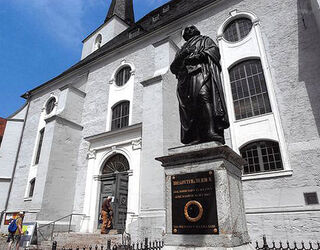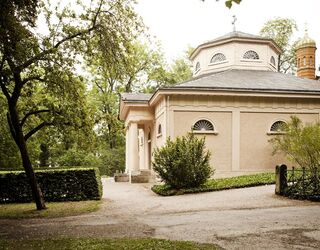A liberal aristocratic society with clever cultural and individual politics were the groundwork of Weimars rise to be an european-cultural center. This would not have been imaginable without the duches Anna Amalia. Goethes choice to pick Weimar as the primary place for his creations carried this legacy all across europe and throughout the world.
Museums of Classical Weimar
Museums of the Classical Weimar
Goethe national museum
The Goethe National Museum organizes different exhibitions based on themes that are relevant to Goethe’s day including objects from his collections. It is situated next to Goethe's Home and contains exhibition rooms, storage rooms and study rooms.
Goethe Gartenhaus
Bought for Goethe by the Duke, the poet lived here until moving to the house on Frauenplan. A place of refuge for Goethe, after his death it became a shrine for his admirers.
Schiller Residence
Friedrich Schiller spent the last three years of his life in this townhouse on the former Weimar Esplanade. Still containing part of the original furnishings, it reflects the style prevalent in Schiller’s day.
Wittumspalais
After a fire in the town palace, the Palace was turned into the dowager residence of Duchess Anna Amalia. The two-winged building is an important document of noble interior design in Weimar.
Herzogin Anna Amalia Bibliothek
Anna Amalia had the ‘Green Palace’ turned into a library comprising a unique combination of books, an art collection and architecture. The Rococo Hall is especially famous. After the library was hit by a devastating fire in September 2004, it was reopened in December 2007 as the jewel of Weimar's…
Roman House
Goethe - the site manager: The Roman House is the first classicist building in Weimar and Goethe oversaw the construction work for this temple-like edifice built in the Doric style.
City Castle
The current design of Weimar’s City Palace, the residence of the Dukes of Saxe-Weimar-Eisenach, has developed over more than 500 years of construction work. Situated on the bank of the river Ilm, the palace was originally built on the site of a medieval moated castle and was first mentioned in…
Belvedere Castle
Laid out in Duke Ernst August’s day in strict French style, in the late eighteenth century the gardens were transformed along the lines of the English landscape approach and many of the original buildings were demolished. Those which have been preserved are the cavaliers’ houses, the orangery along…
Tiefurt Mansion
The building, built in 1765 as a tenant house on ducal property on the bank of the river Ilm, served as Duke Carl August's younger brother's residence from 1776 on. Til 1806 it was the summer residence of Duchess Anna Amalia and a place for literary and social encounters.
Ettersburg Castle
The Ettersburg Palace complex consists of the old palace itself, the adjacent church, and the new palace in front, and was originally used as Anna Amalia’s summer residence. During this time, a literary and artistic circle met here, to which Wieland, Goethe or Herder belonged, among others.
Park on the river Ilm
With Goethe having been so closely involved in the layout of this landscape park, it’s no wonder that it features both classical and post-classical traits. One of its main attributes is the many lines of sight, while its most distinctive architectural feature is Roman House.
Belvedere Park and Orangery
The barock garden, build in a strict french manner, would later be transformed to a british garden. Accompanying the garden of joy and the orangery, a russian garden, hedge-garden and a labyrinth joined the repertoire.
Tiefurt Park
The first sections were laid out by Prince Constantine, the youngest son of Anna Amalia. When Anna Amalia relocated her summer residence to Tiefurt, she gradually continued working on the park. It was later rearranged and restored.
St. Peter and Paul (Herder Church)
The three-winged altar by Lucas Cranach with the famous depiction of the Reformation is famous. The present church building was built as a three-nave hall church in late Gothic style. The ensemble is part of the UNESCO World Heritage Site "Classical Weimar".
Historical Cemetery
This graveyard with a park-like feel laid out in 1918 is one of the most beautiful places in Weimar to recall the classical and post-classical eras. The coffins of Goethe and Schiller can be viewed in the Ducal Vault, and many other Weimar celebrities are also buried here.
Anzeigen
